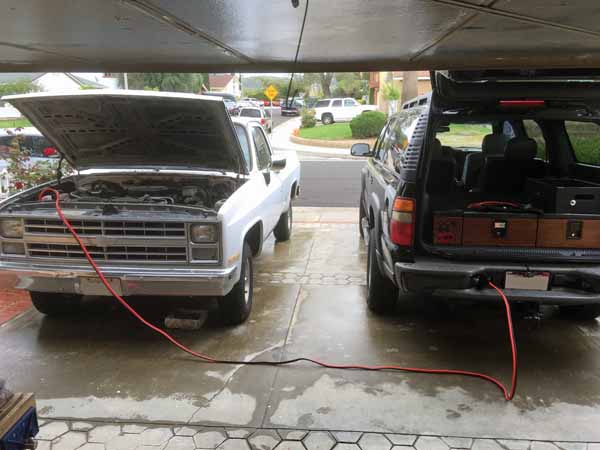rayra
Expedition Leader
ok, some basic electrical. Electrical current generates heat in the wire. The more resistance - a defect in the wire, a bad or corroded connection, a wire sized too small - you get more heat. Too much heat, too much current flow for a given wire size, the wire gets very hot, your wire insulation melts and/or ignites, you have a fire or the now exposed wire shorts to something that shouldn't be energized and then things get exciting and expensive.
So first you determine the power draw / load of what you are trying / intending to energize. Then you look up the current rating for the wire size you hope or need to load. Always more up to the next greater wire size (smaller number, perversely) if you come anywhere close or even slightly exceed the rating of the smaller wire.
This is also a place where it doesn't hurt to add some 'buffer' in your power load estimate, akin to a tradesman buying 10% more of some material 'just in case of need'.
As an aside when sizing wire, especially for main runs to an added fuse panel etc, combine ALL the possible simultaneous loads to determine the gauge of your main supply wire to the added panel. Don't cheap out and say 'each of my 6 new circuits in the new panel are fused at 15A, so my main supply only needs to be that. Imagine ALL the things running at once, out of accident or ignorance, or inquisitive 5yr-old. So the main supply wire to that panel should be able to handle ALL the loads. That gives you a maximal safety margin.
Lastly, when it comes to fusing, once you've determined the max allowable power flow thru a given wire size, you fuse at a value LESS than that. That way you'll always melt the fuse (killing the power flow) before you can melt the wire (see above about things getting exciting and expensive).
The maxim / rubric about fusing as close to the power source as possible is about protecting the maximal length of that wire run against inadvertant physical damage to the run.
And on that, always consider the environment you are running wire in and protect the wire against crimping, shearing, crushing and abrasion. And the dreaded chaffing. Never trail a wire over a sharp edge. never leave a wire loose and moving around near an edge or surface that will abrade the insulation. Gaffer tape, 3m double stick, real / quality duct tape, mechanical hold downs. Use SOMETHING to constrain the wire and prevent it wearing thru against something else. And use the proper rubber grommets when putting a hole / wire thru some sheet metal or the like.
And always, if you have a question, ask it, you'll get lots of answers, some of them will even be educational and useful. And at least one of verkstad, dwh or (?) will (also) tell you it's all going to burn up.
So first you determine the power draw / load of what you are trying / intending to energize. Then you look up the current rating for the wire size you hope or need to load. Always more up to the next greater wire size (smaller number, perversely) if you come anywhere close or even slightly exceed the rating of the smaller wire.
This is also a place where it doesn't hurt to add some 'buffer' in your power load estimate, akin to a tradesman buying 10% more of some material 'just in case of need'.
As an aside when sizing wire, especially for main runs to an added fuse panel etc, combine ALL the possible simultaneous loads to determine the gauge of your main supply wire to the added panel. Don't cheap out and say 'each of my 6 new circuits in the new panel are fused at 15A, so my main supply only needs to be that. Imagine ALL the things running at once, out of accident or ignorance, or inquisitive 5yr-old. So the main supply wire to that panel should be able to handle ALL the loads. That gives you a maximal safety margin.
Lastly, when it comes to fusing, once you've determined the max allowable power flow thru a given wire size, you fuse at a value LESS than that. That way you'll always melt the fuse (killing the power flow) before you can melt the wire (see above about things getting exciting and expensive).
The maxim / rubric about fusing as close to the power source as possible is about protecting the maximal length of that wire run against inadvertant physical damage to the run.
And on that, always consider the environment you are running wire in and protect the wire against crimping, shearing, crushing and abrasion. And the dreaded chaffing. Never trail a wire over a sharp edge. never leave a wire loose and moving around near an edge or surface that will abrade the insulation. Gaffer tape, 3m double stick, real / quality duct tape, mechanical hold downs. Use SOMETHING to constrain the wire and prevent it wearing thru against something else. And use the proper rubber grommets when putting a hole / wire thru some sheet metal or the like.
And always, if you have a question, ask it, you'll get lots of answers, some of them will even be educational and useful. And at least one of verkstad, dwh or (?) will (also) tell you it's all going to burn up.



